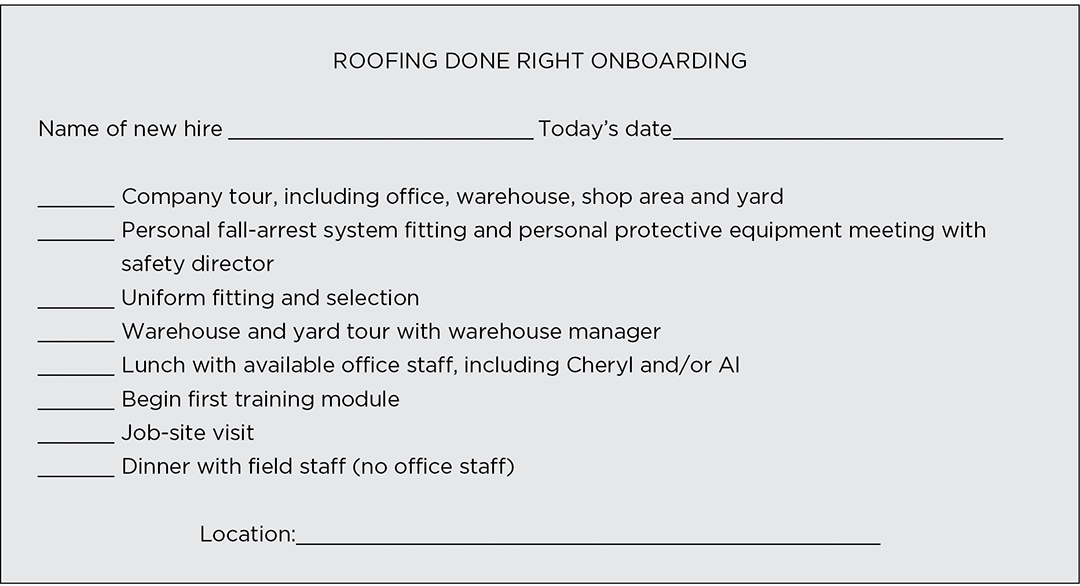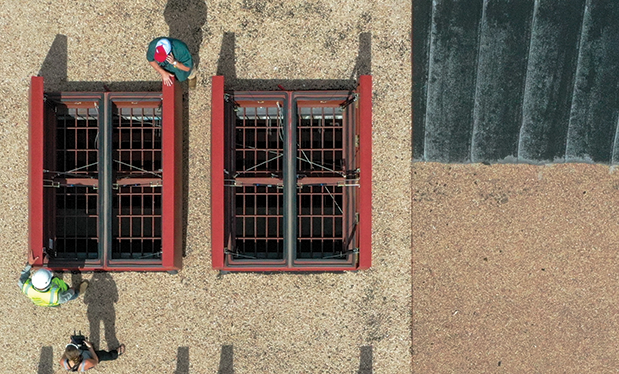
Editor’s note: The following is a fictionalized depiction.
Jamie’s trip to Sturgis, S.D., was amazing. For all the motorcycle riding he had done in his life, he’d never taken such a long trip or been to this iconic event. It took four days to get there from Tucson, riding through some blistering hot days.
The place was incredible! There were people everywhere! Jamie headed out into the crowd and, before long, decided to take a rest. He grabbed a beer and found a spot at an empty picnic table in a bit of shade.
A few minutes later, a couple approached and asked whether they could take the other side of the table. Jamie was happy to oblige, and the three of them started talking about their bikes, families and, eventually, work. They were surprised to find they all worked in roofing.
Cheryl and Al owned Roofing Done Right, a midsized commercial roofing company in Nebraska. Jamie had been hired by a friend’s dad’s company six years ago and recently was promoted to foreman. They talked about their enjoyment of the trade and love of working outdoors. Cheryl and Al invited Jamie to stop by on his way back to Tucson to see their shop and operation.
Several days later, Jamie rolled into the parking lot of Roofing Done Right. He planned to visit his new friends and stay the night in town before continuing to Tucson.
The company tour was great. Cheryl and Al ran a smooth operation. One thing he was curious about: There were more people around—installers, it seemed—than would normally be at his company in the afternoons. It was a beautiful day and Jamie thought they’d all be out on roofs, yet there were a few in the corner of the office working on a tabletop and some others in the office talking with someone, apparently just shooting the breeze.
When Jamie asked about it, Al explained it was part of their re-recruiting program. Jamie assumed he had misheard and asked Al where they were able to find all these new hires.
“No,” Al said. “Re-recruiting. Only one of the people you’ve seen is new. The others have been with us for a few months or longer.”
“Wait,” replied Jamie, with a baffled look on his face. “You onboard for a few days? We give new hires a policy manual, fit them in a safety harness and show them some videos, which only takes a few hours. Our foremen are great and take it from there. What do you mean by re-recruiting?”
“We want to hire employees who want careers and who want to build those careers here,” Al explained. “We don’t want to worry everyone’s going to jump ship as soon as another contractor offers them a little more money per hour. We realized we needed to make a serious investment in our people if we expect them to invest in us, and we start that investment the moment someone comes on board. We started the company almost 10 years ago, and we have a process that works for us. We don’t see too many people leaving unless they’re moving out of town or retiring. We get fantastic referrals, too.”
Jamie wanted to hear more about this process.
Al explained that from the moment someone walks in the door to fill out an application, they treat the prospect well. They provide free coffee, sodas and snacks and tell a potential hire to take time completing the application. Applicants are seated in a comfortable space filled with artwork made by employees’ kids, and there’s a computer where they can watch a few videos about the company and some NRCA videos about working in the roofing industry.
Once an applicant completes the application, the human resources manager discusses what the company offers.
“We decided we want to try to sell ourselves to applicants as much as we expect them to sell themselves to us,” Al explained.
“We ask questions and talk about what brought them in and what they’re looking for. We talk about the qualities we’re looking for in a team member and gauge their responses. The truth is, as much as we want new people, we won’t hire someone who doesn’t seem at all energized by these conversations.
“We want to see willingness to learn and work hard,” Al continued. “We don’t shy away from telling them it’s hard work, and we give them a no-shame out if they realize it’s not for them. We keep gift cards to a few local restaurants and, for those who seem unsure, we tell them to go grab lunch and think about it.
“If they’re interested after all this, we schedule them to come in the following day for a whole day of learning the ropes.”
Al then showed Jamie the checklist they use for the orientation day (see figure).

“This is just the beginning of the re-recruiting,” Al explained. “But it’s an important beginning. We consider recruiting to be anything that gets people to walk in the door. Once they’re in, it’s all about keeping them in, which is why we call it re-recruiting. And it’s never-ending.”
Al went on to explain how re-recruiting looks different for different people. Some need more time with a trainer, and Al will pull people off crews for an hour or two to work on skills.
Others meet frequently with the director of workforce development though she meets with all employees at least once per year. She asks about their job satisfaction, and the company has been able to address some patterns and change things that might cause new employees to leave. She asks the following questions:
- “What are the best things about your experience here?”
- “What have been the lowlights?”
- “What made you consider quitting, and how do we make sure that doesn’t happen again?”
Also, she tries to get to know everyone and assess what’s important to each person. For example, some people would rather enroll in a local community college course than get a bonus or have a gift card sent home to their spouse instead of getting it themselves.
“We even helped one woman finish college,” Al said. “She ended up leaving to pursue another career, but she was a great employee while she was here, and she referred her brother and nephew to our company, and they’re both still here.
“We do fun stuff, too. We had an employee whose daughter came in first at the state gymnastics meet, so we had her come in and do a routine for us one day. You should have seen this guy’s pride because he was showing off his kid to his company and showing off his company to his family.”
After hearing all this, Jamie was dumbfounded.
“How do you have the time for all the conversations?” he asked. “I feel like we’re working full tilt all the time.”
Al explained that is why they hired the director of workforce development. She is charged with the ongoing re-recruiting conversations and assesses training needs by talking to foremen and superintendents. And she works with the trainers to set up group and individual sessions.
Al provided Jamie with the job descriptions they used for director of workforce development and trainers.
By the time Jamie pulled out of town to head home, he had already contacted his company owner to let him know about his conversations with Al and Cheryl. He couldn’t wait to get back to Tucson and tell him how their company could start re-recruiting.
AMY STASKA is vice president of NRCA University.


